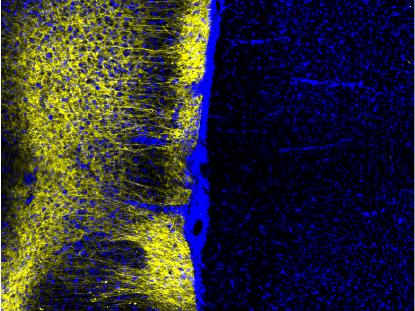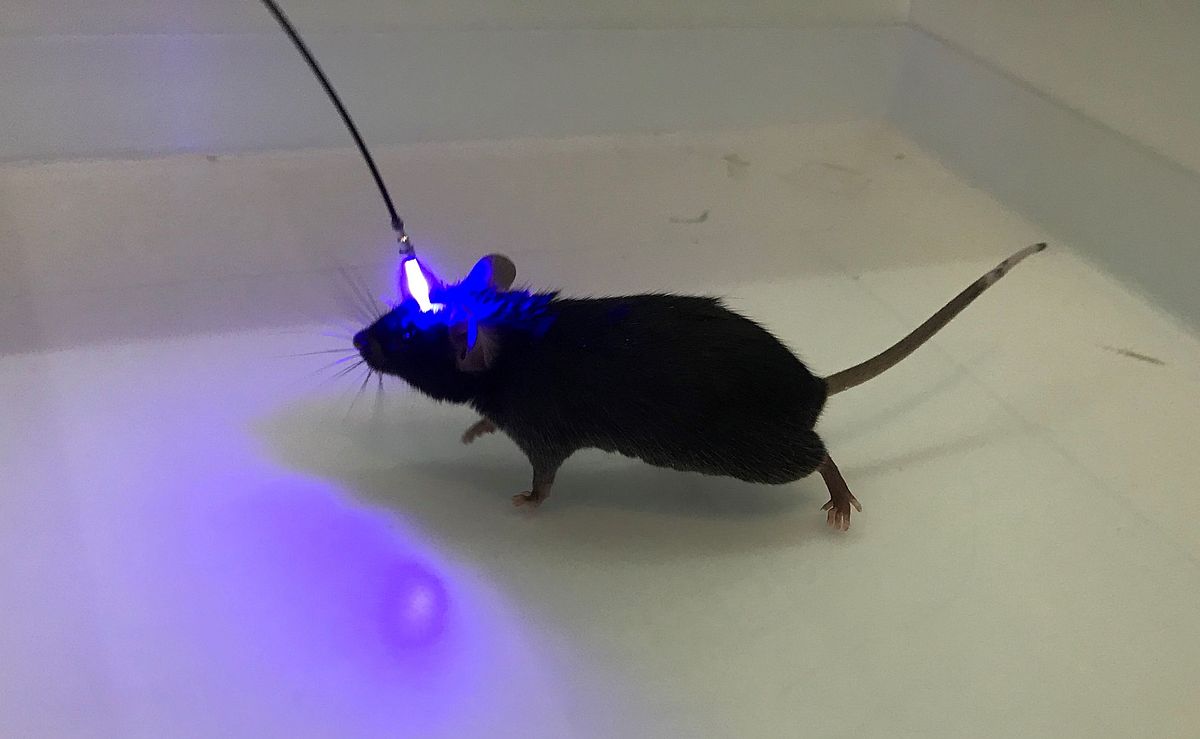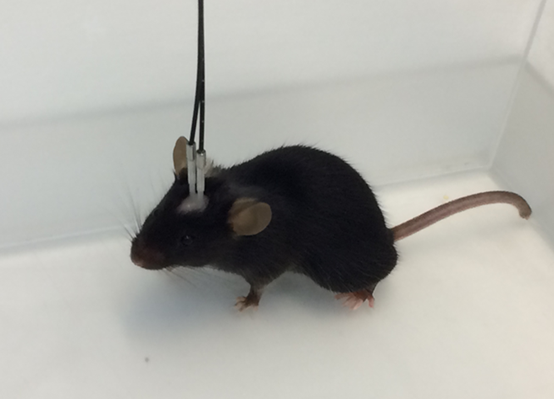Research
Disturbances in serotonin levels
It has been known for a long time that disturbances in the serotonin levels lead to different diseases such as depression, anxiety or disorders which are connected to disturbed decision making. Especially 5-HT1 auto-receptors, serotonergic G-protein coupled receptors (GPCRs), which regulate the release of serotonin, are important for the maintenance of serotonin levels.
The autoregulation of the serotonergic system is of great interest in our group, since variances in these intracellular signal cascades are believed to be the reason for various psychiatric diseases. These GPCRs are not only found in serotonergic neurons but also on non-serotonergic neurons throughout the central nervous system (heteroregulation) and their activation can have several effects. However, the extent of influence, the hetero-receptors have on anxiety related disorders, depression, memory deficits and impaired decision making related disorders, are not known yet.
Our research
So far the intracellular signalling pathways could not be systematically investigated because no tools were available to activate them quickly and with high precision. But in the last 14 years a new method emerged: optogenetics. This method is based on the idea to modulate the activity and signalling pathways in the CNS with light. Optogenetics already revolutionized several areas of neuroscientific research.
In this context we use different opsins to activate specific intracellular pathways with a high degree of temporal and spatial resolution via light.
By using molecular methods we produced light-activated serotonergic receptor chimeras, which activate the same intracellular pathways as the native receptors do. Combined or independent stimulation of the receptor chimeras inside or outside the serotonergic system is used in our lab to investigate various behavioural pattern of wildtype mice or Cre-mouselines. Our aim is to understand the influence, serotonin has on the development and manifestation of anxiety related disorders, depression, decision making and memory deficits. Our goal is to provide better insights into the 5-HT system to improve the development of new therapeutic tools for the treatment of neuronal disorders.
Additionally to in vivo research, we use molecular biological methods to develop further useful tools for investigating the serotonin system, such as a serotonin sensor.
Research focuses

Serotonin (5-hydroxytryptamine; 5-HT) has been shown to modulate emotional behavior and alterations in 5-HT levels have been related to different disease states including anxiety disorders and depression. Our research focuses on how changes in serotonergic signaling contribute to the development and manifestation of anxiety and depression. We are in particular interested in understanding the autoregulation of the serotonergic system itself which is mainly mediated by 5-HT1 receptors, which are G-protein coupled receptors (GPCRs). Alterations in the 5-HT1 signaling pathways have been suggested to be responsible in the manifestation of psychiatric disorders. Additionally, these GPCRs are also found in non-serotonergic neurons of the central nervous system (CNS), were they modulate neuronal activity postsynaptically (Heteroregulation). To date it is not clear how heteroreceptors influence the manifestation and progression of psychiatric diseases.
For a better understanding of the serotonergic system and its involvement in anxiety and depression our group tries to develop new molecular tools. One of these tools is a genetically encoded fluorescence sensor for serotonin, which enables the visualization of serotonin release between synapses and volumetransmission of serotonin.
A change in fluorescence intensity indicates binding of serotonin. With this kind of sensor, we would like to understand, if disturbances in brain serotonin levels are responsible for the development and manifestation of anxiety and depression. In the end we would like to visualize serotonin release in real time and in vivo in the awake animal model to scrutinize, if disturbances within the serotonergic system are indeed the cause for many psychiatric diseases. We hope that our basic research will contribute to the development of new therapeutic approaches and medications.

Depression and anxiety disorders are the most common diseases worldwide. Only Major Depressive Disorder (MDD) affects more than 300 million people. Worldwide one third of the population suffers from anxiety disorders. Despite decades of research, the exact mechanism, which lead to the development and manifestation of depression and anxiety, are still unknown. Since 1954 it is known that the neurotransmitter serotonin is an important modulator of the pathophysiology of MDD and related disorders (Freis 1954). With specific optogenetic manipulation of the serotonergic system our group investigates the molecular mechanism of these disorders at the cellular level and in freely behaving mice.

One of our research questions is to understand how serotonin acts on decision making. Decision making is not a unified process: it is based on different processes like cognitive flexibility (Homberg, 2012), impulsive action (Hinson, Jameson, & Whitney, 2003), as well as risky decision making (Pittaras et al., 2013). It has been shown, that differences in serotonin levels influence decision making (Pittaras et al., 2013), but the exact underlying mechanisms and effects of serotonin are not completely discovered yet. The main focus will be on the influence of serotonin in the medial prefrontal cortex (mPFC), which is one of the most important brain regions involved in decision making. This influence will be investigated in the mouse gambling task, a behavioural task for risky decision making in mice.

Our perception is based on two processes: first, the integration of sensory information, and second, by the cognitive representation of these inputs, whereby both of these processes are greatly influenced by our affective state. The hippocampus is the main structure where cognitive representations of our environment are formed and stored. Importantly, the ability and effectiveness to store and recall these representations is regulated by affective state, such as arousal, attention, mood or saliency. The serotonergic system is closely associated with the regulation of affective states and is known to influence memory acquisition and encoding within the hippocampus. To scrutinize the impact of serotonergic control on hippocampal information processing and circuitry we perform optogenetic, electrophysiological and Ca2+ imaging experiments in vitro as well as in awake mice.




